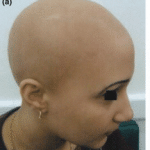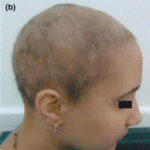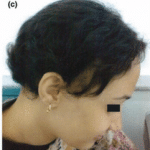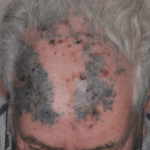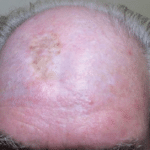Diphenylcyclopropenone, DPCP, Diphencyprone
For the treatment of Alopecia areata, totalis, universalis, as well as for recalcitrant warts and some cases of metastatic melanoma
We supply highly purified DPCP – the active ingredient used to formulate the topical solution.
Product codes:
1076 – Highly purified >99.5% pure
1077 – GMP grade prepared in accordance with TSE, ISO and GMP regulations
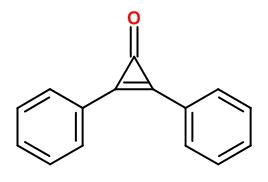
Available in 1g, 5g or 10g batches, for prices and quotation for larger quantities please contact us. Certificate of analysis and MSDS supplied. Further details are available on request. Full analytical details are provided with each batch
Diphencyprone (2,3-diphenylcycloprop-2-en-1-one or DPCP) [C15H10O] is a pale fawn coloured solid used as an experimental sensitising agent in dermatology to treat skin conditions by contact immunotherapy.
Batches are analytically pure and free of bromine containing impurities including the precursor α, α –dibromo dibenzyl ketone, DBBK. Diphencyclopropenone (DPCP) is affected by light and must be stored in total darkness at 4-8 0C. If stored under these conditions, it is stable for up to three years. Full analytical details are provided with each batch.
Images from El-Zawahry, et al. 20101
An example of a 71-year-old man with extensive scalp melanoma. (a) The patient showed dramatic regression of his extensive scalp disease within 4 weeks of starting diphencyprone immunotherapy. (b) The residual melanin pigmentation gradually faded, and the scalp remained clinically normal 41/2 years later, till date of publication. (Damian et al; 2009)
References
- 1El-Zawahry, B., Bassiouny, D., Khella, A. and Zaki, N. (2010), Five-year experience in the treatment of alopecia areata with DPC. Journal of the European Academy of Dermatology and Venereology, 24: 264–269.
- Damian, D. L., Shannon, K. F., Saw, R. P. and Thompson, J. F. (2009), Topical diphencyprone immunotherapy for cutaneous metastatic melanoma. Australasian Journal of Dermatology, 50: 266–271.
- Lamb et al., (2016) Retrospective review of Diphencyprone in the treatment of Alopaecia areata. Clin. Exp. Dermatol. 41(4):352-8. Doi: 10.1111/ced.12776.12776.
- Gibbons, I. L., Sonagli, M., Bertolli, E., Macedo, M. P., Pinto, C., & Duprat Neto, J. P. (2018). Diphencyprone as a therapeutic option in cutaneous metastasis of melanoma. A single-institution experience. Anais brasileiros de dermatologia, 93(2), 299–301. https://doi.org/10.1590/abd1806-4841.20187162

